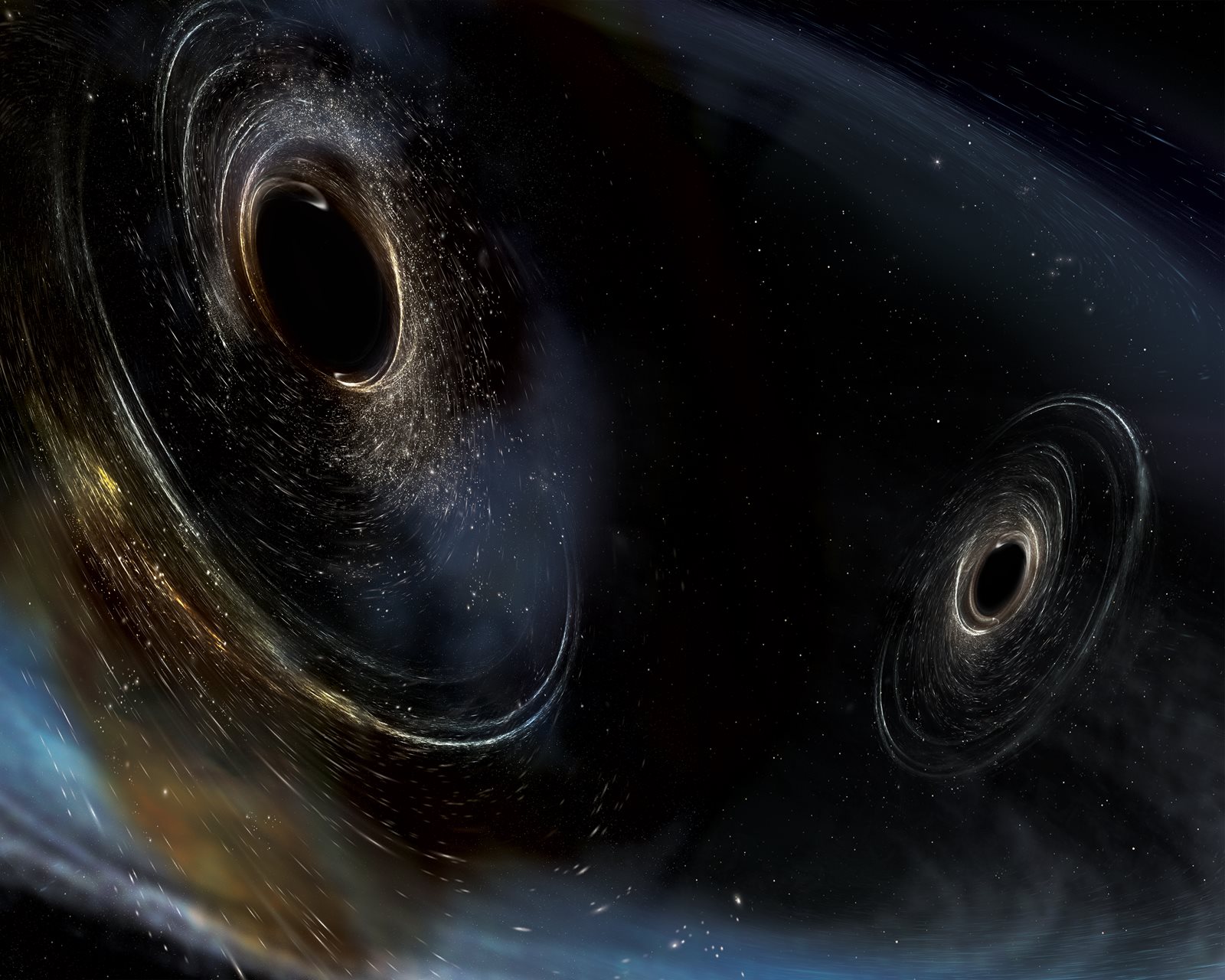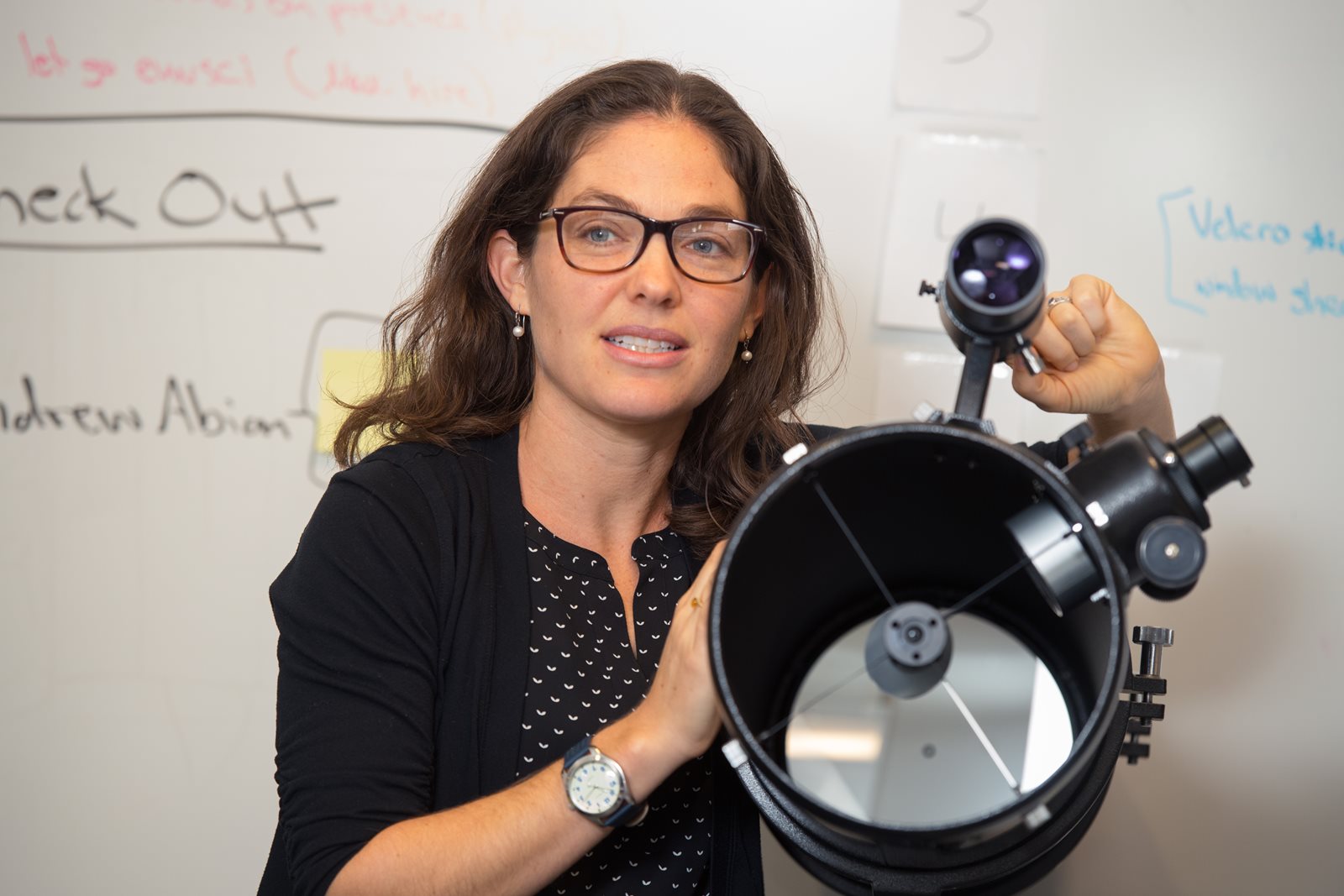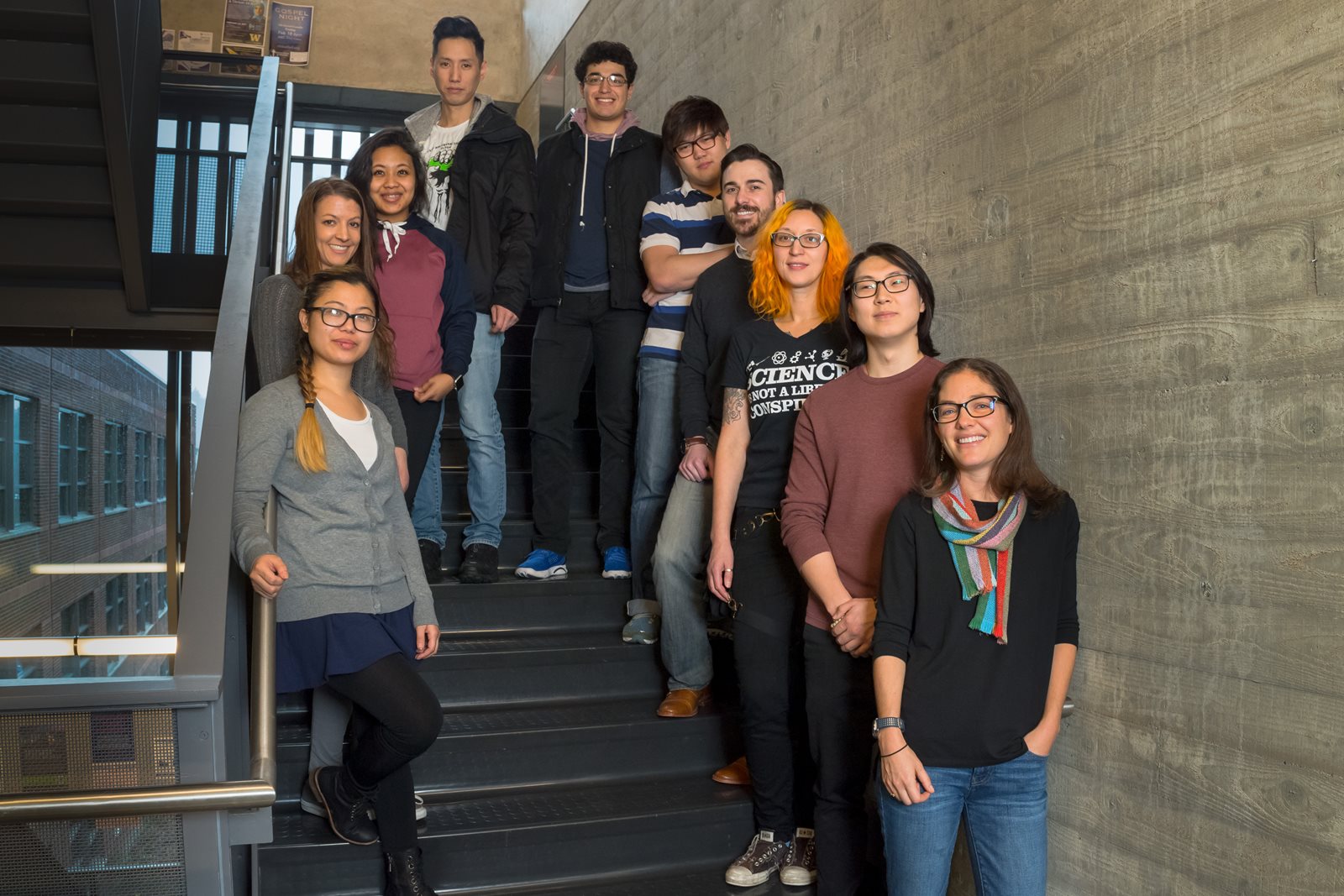
For immediate release
June 2, 2017
Contact Lisa Hall 425-352-5461 / lhall7@uw.edu
UW, UW Bothell scientists explain new discovery in gravitational wave astronomy
The announcement that a third collision of black holes has been detected three billion light years away validates the work of hundreds of scientists, including teams at the University of Washington and UW Bothell.
The discovery was made using a detector located at Hanford in eastern Washington and its twin in Louisiana, together known as the Laser Interferometer Gravitational-wave Observatory (LIGO). This new window in astronomy observes ripples in space and time, as predicted by Albert Einstein. The first two waves generated by the merger of two black holes were detected in 2015. The third, detected in January, is described in a paper published in the journal Physical Review Letters.
Recently, the UW teams have made a significant instrumental contribution to LIGO's second Observing Run by installing ultra-sensitive tiltmeters at the LIGO Hanford Observatory (LHO), one of the two LIGO observatories in the U.S. These tiltmeters improve the isolation of LIGO from ground motion, thus increasing the duty cycle of LHO under adverse environmental conditions, such as high wind and high ground motion.
Despite 20 mph winds on Jan. 4, the improved seismic isolation at LHO helped identify the nearly simultaneous gravitational-wave signal seen at the two LIGO observatories. Those gravitational-wave signals, which lasted less than a second in the detector, are believed to be from the merger of black holes with masses about 31 and 19 times the mass of the sun, which happened at a distance of more than 3 billion light years. Energy equivalent to twice the mass of the sun was radiated as gravitational waves.
UW Bothell students are working with scientists at the LIGO Hanford Observatory on data quality and contributing to searches for other gravitational wave sources, said Joey Key, left, assistant professor of physics at UW Bothell, one of the authors of the paper.

“LIGO is opening up a new way to explore our universe, including populations of elusive black holes,” Key said. “This is a significant discovery of a new black hole collision, adding to our map of black hole systems and utilizing the increased sensitivity of the LIGO detectors.”
Key leads the UW Bothell LIGO Scientific Collaboration group, which includes lecturer Matt DePies and students Andrew Clark, Holly Gummelt, Paul Marsh, Jomardee Perkins and Katherine Reyes. Physics professor Jens Gundlach, graduate student Michael Ross and Krishna Venkateswara, assistant professor of physics, comprise the LIGO Scientific Collaboration group at the UW in Seattle.

Photo: The UW Bothell gravitational wave astronomy research group, which works in the LIGO Scientific Collaboration, from left: Jemini Abides, Katherine Reyes, Jomardee Perkins, Michael Park, Erik Maldanado, Danny Kim, Matthew Marriott, Holly Gummelt, Ernie Enkhzaya, Joey Shapiro Key.
“With the detection of a third binary black hole merger, LIGO continues to expand our knowledge about the nature of these events, their astrophysical origins and about the fundamental nature of gravity,” Venkateswara said. “LIGO is allowing us to 'hear' the sounds of the universe and many more exciting symphonies await discovery.”
Audio representation of black hole collision and artist's conception of black holes merging as detected by LIGO. Image credit: LIGO/Caltech/MIT/Sonoma State (Aurore Simonnet)
The UW research was funded by the National Science Foundation (NSF).
LIGO is funded by the NSF and operated by MIT and Caltech, which conceived and built the project. Financial support for the Advanced LIGO project was led by NSF with Germany (Max Planck Society), the U.K. (Science and Technology Facilities Council) and Australia (Australian Research Council) making significant commitments and contributions to the project. More than 1,000 scientists from around the world participate in the effort through the LIGO Scientific Collaboration, which includes the GEO Collaboration. LIGO partners with the Virgo Collaboration, a consortium including 280 additional scientists throughout Europe supported by the Centre National de la Recherche Scientifique (CNRS), the Istituto Nazionale di Fisica Nucleare (INFN), and Nikhef, as well as Virgo’s host institution, the European Gravitational Observatory. Additional partners are listed at: http://ligo.org/partners.php
# # #
For more information, contact Joey Key at UW Bothell at 425-352-5497 or joeykey@uw.edu, or Krishna Venkateswara at 301-395-8750 or kvenk@uw.edu.
Grant numbers: NSF 1607385 and 1505861.



